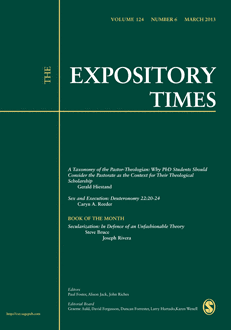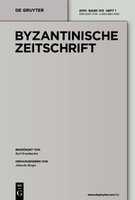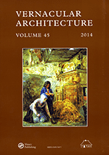
Vizantiiskii Vremennik
Scope & Guideline
Unveiling the Secrets of Byzantine Civilization
Introduction
Aims and Scopes
- Byzantine Hagiography and Saints' Lives:
Research on the lives of saints and hagiographical texts, exploring their historical context, theological implications, and literary styles. - Byzantine Art and Architecture:
Studies focusing on the artistic traditions, architectural styles, and iconography of Byzantine art, including analysis of mosaics, miniatures, and church designs. - Cultural Interactions and Influences:
Exploration of how Byzantine culture interacted with neighboring civilizations, including the influence of Islamic, Slavic, and Western cultures on Byzantine practices and vice versa. - Historical Narratives and Historiography:
Analysis of historical sources, including chronicles and letters, to understand the narratives constructed around Byzantine history and their historiographical significance. - Religious Practices and Theological Debates:
Examination of religious life in Byzantium, including liturgical practices, theological controversies, and the role of the Church in society. - Monasticism and Ascetic Practices:
Research on the development and influence of monastic communities, including their writings, spiritual practices, and impacts on Byzantine society.
Trending and Emerging
- Interdisciplinary Approaches to Byzantine Studies:
There is a growing trend towards incorporating methodologies from fields such as archaeology, anthropology, and art history to provide a more holistic understanding of Byzantine culture. - Focus on Women in Byzantine Society:
Increasing attention is being given to the roles of women in Byzantine society, including deaconesses and saints, which reflects a broader interest in gender studies within historical contexts. - Cultural Memory and Identity:
Research on how cultural memory and identity were constructed and maintained in Byzantine society, particularly in relation to religious and historical narratives. - Digital Humanities in Byzantine Studies:
The use of digital tools and resources for the analysis and dissemination of Byzantine texts and artifacts is emerging, allowing for new forms of engagement with Byzantine heritage.
Declining or Waning
- Political History and Governance:
Studies on the political structures and governance of the Byzantine Empire have seen a decline, possibly due to the saturation of existing literature and the emergence of more specialized research areas. - Military History and Warfare:
Research focusing on Byzantine military strategies, battles, and army organization has waned, suggesting a shift towards more cultural and social aspects of Byzantine life. - Classical Influence on Byzantine Literature:
The exploration of classical texts and their direct influence on Byzantine literature is less prominent, as researchers may be prioritizing original Byzantine contributions over classical connections.
Similar Journals

EXPOSITORY TIMES
Exploring the Depths of Biblical InsightEXPOSITORY TIMES is a prestigious journal published by SAGE Publications Ltd that has been a cornerstone in the field of Religious Studies since its inception in 1889. With a strong emphasis on the analysis and interpretation of biblical texts, this journal fosters critical discourse among researchers, scholars, and theologians, contributing significantly to ongoing debates and advancements in religious scholarship. The journal has an impressive scope, seeking to bridge traditional and contemporary perspectives, which is further underscored by its placement in the 2023 Category Quartiles as Q3 in Religious Studies. Although not an open-access publication, it maintains a reputable presence, evidenced by its Scopus Ranking of rank #364 out of 644, placing it in the 43rd percentile within its category. The journal's commitment to rigorous scholarship and its invitation to explore diverse theological viewpoints make it an essential resource for those invested in the study of religion and its impact on society.

Espacio Tiempo y Forma Serie VII-Historia del Arte
Illuminating the Past: Insights into Art and ContextEspacio Tiempo y Forma Serie VII-Historia del Arte, published by the Universidad Nacional de Educación a Distancia, stands as a pivotal open-access journal in the realm of Art History. Since its inception, it has steadily contributed to scholarly discourse by providing a platform for the publication of rigorous research that explores the intricate relationship between historical contexts and artistic expressions. With an Impact Factor reflecting its relevance, this journal occupies a critical niche within the Q3 categories of both History and Visual Arts and Performing Arts. Researchers and practitioners alike can benefit from the diverse range of articles published, which delve into various artistic movements and their socio-cultural implications. Operating from its base in Madrid, Spain, the journal continues to accept submissions through 2024, fostering an inclusive academic environment that nurtures the exchange of ideas. With its open-access model established since 2005, Espacio Tiempo y Forma enhances accessibility to vital research, inviting an engaged readership from around the globe.

BYZANTINISCHE ZEITSCHRIFT
Connecting the Past to Present in Byzantine StudiesBYZANTINISCHE ZEITSCHRIFT, an esteemed publication founded in 1892, is dedicated to advancing the study of Byzantine history, literature, and the arts. Published by WALTER DE GRUYTER GMBH in Germany, this journal holds a significant place in academic discourse, evidenced by its Q2 quartile ranking in both Literature and Literary Theory, and Visual Arts and Performing Arts, as well as its Q3 ranking in History according to the 2023 category quartiles. The journal is highly regarded for its contributions to scholarly discussions and features a diverse range of articles that appeal to researchers, professionals, and students alike. With its deep historical roots and a commitment to quality scholarship, BYZANTINISCHE ZEITSCHRIFT remains a crucial resource for anyone interested in the multifaceted dimensions of the Byzantine era, covering converged years from 1892 to 2024. Engage with this journal to explore the complex narratives and rich heritage of Byzantine culture and its lasting impact on contemporary scholarship.

ArcHistoR-Architecture History Restoration
Advancing Knowledge in Architecture and Visual ArtsArcHistoR-Architecture History Restoration is an esteemed open-access journal published by UNIV MEDITERRANEA REGGIO CALABRIA since 2014, focused on the multifaceted domains of architecture, history, and visual arts. This journal serves as a vital platform for the dissemination of research findings, innovative methodologies, and critical discussions surrounding the restoration and history of architectural practices, appealing to a diverse audience of researchers, professionals, and students in these fields. With a commitment to scholarly excellence, ArcHistoR has positioned itself within the academic community, reflected in its ranking in the 2023 category quartiles, where it secured Q4 in Architecture and Q3 in both History and Visual Arts and Performing Arts. The journal facilitates global collaboration and knowledge sharing in its areas of expertise, further underscoring its relevance and significance. Based in Italy, effective communication and cooperation in the restoration community can flourish through the journal's purview. For those dedicated to expanding their understanding and contributing to the discourse on architectural history and restoration, ArcHistoR is an invaluable resource.

Deltion of the Christian Archaeological Society
Uncovering the Past, Shaping the Future of Christian ArchaeologyDeltion of the Christian Archaeological Society (ISSN: 1105-5758, E-ISSN: 2241-2190), published by the Christian Archaeological Society in Athens, Greece, stands as a pivotal source of scholarly work within the realm of Christian archaeology. This journal is dedicated to disseminating high-quality research that promotes the understanding of Christian history, heritage, and archaeological practices. Though it operates under traditional access options, it provides a comprehensive platform for researchers and professionals alike, fostering dialogue and collaboration within the archaeological community. With a commitment to advancing knowledge, the Deltion aims to support both established scholars and emerging voices, reinforcing the significance of archaeology in interpreting religious narratives and cultural contexts. Researchers, students, and professionals interested in the intersections of archaeology, history, and theology will find this journal an invaluable resource in their scholarly pursuits.

Jahrbuch der Oesterreichischen Byzantinistik
Unveiling the rich tapestry of Byzantine studies.Jahrbuch der Oesterreichischen Byzantinistik, published by the esteemed Österreichische Akademie der Wissenschaften, is a vital academic journal dedicated to advancing the study of Byzantine studies, history, and related fields. Situated in Austria, this journal serves as a critical platform for scholars and researchers, offering a rich collection of articles that reflect the diverse aspects of Byzantine culture, literature, and archaeological findings. Despite its recent categorization in the Q4 quartile in areas such as Archaeology, History, and Literary Theory, it commands impressive rankings within Scopus, particularly in Literature and Literary Theory at the 87th percentile, highlighting its growing impact in the arts and humanities. Researchers and professionals can access comprehensive studies that span from 2010 to 2018 and continue from 2020 to 2023, paving the way for interdisciplinary dialogue and exploration within the Byzantine field. As a continually evolving resource, the Jahrbuch is essential for those committed to deepening their understanding of this historically rich domain.

Church History and Religious Culture
Connecting Past Narratives with Contemporary InsightsChurch History and Religious Culture is a reputable academic journal published by BRILL, focusing on the intricate interplay between history and religious practice. With an ISSN of 1871-241X and an E-ISSN of 1871-2428, this journal serves as a vital platform for scholars and students alike, fostering a deeper understanding of the multifaceted nature of religious traditions through a historical lens. Situated in the Netherlands, the journal is notable for its extensive chronological coverage, having begun its publication journey in 1912 and continuing to present impactful research well into 2024. While it currently holds a Q4 classification in both History and Religious Studies, its commitment to high-quality scholarship ensures relevance and engages a wide readership. Readers are invited to explore an array of research that not only reflects on past narratives but also contributes to contemporary discussions within the fields of history and religious studies, highlighting the enduring significance of faith and belief systems in human society.

Zbornik Radova Vizantoloskog Instituta
Advancing Scholarship in Classics and HumanitiesZbornik Radova Vizantoloskog Instituta is a distinguished open-access journal published by the Institute of Byzantine Studies, Serbian Academy of Sciences and Arts, located in Belgrade, Serbia. Since its inception in 2003, this journal has served as a vital platform for the dissemination of scholarly research in the fields of Classics, History, Linguistics and Language, and Literature and Literary Theory. Although it currently holds a Q4 ranking in the 2023 category quartiles, its commitment to fostering academic discourse and research accessibility is unwavering. The journal features a diverse range of articles that explore the complexities and nuances of Byzantine studies and related disciplines, catering to a broad audience of researchers, professionals, and students dedicated to the humanities. With a focus on both historical context and contemporary perspectives, Zbornik Radova Vizantoloskog Instituta aims to contribute significant insights into the academic community while promoting scholarly interaction on a global scale.

Vernacular Architecture
Preserving Heritage, Inspiring InnovationVernacular Architecture, published by ROUTLEDGE JOURNALS, TAYLOR & FRANCIS LTD, is a pivotal scholarly journal dedicated to the study and preservation of traditional architectural practices. With its ISSN 0305-5477 and E-ISSN 1749-6292, this esteemed journal has been at the forefront of research from 1971 to 2023, providing a platform for interdisciplinary discourse among architects, historians, and conservationists. The journal holds noteworthy rankings, placing in the Q4 quartile for Architecture and making significant strides in related fields, including Conservation, History, and Visual Arts. As a vital resource with a current Scopus rank of #142 in Visual Arts and Performing Arts, it not only reflects the rich fabric of architectural heritage but also stimulates innovative approaches to contemporary building practices. Although not open access, it remains indispensable for those who wish to explore the nuances of vernacular forms and their cultural significance. Experience the convergence of scholarship and practice in Vernacular Architecture, a journal that champions the essence of place and identity in the built environment.

Zograf
Empowering global scholarship through open access.Zograf is a distinguished open-access journal published by the University of Belgrade's Institute of Art History, Faculty of Philosophy, dedicated to the fields of Archeology, History, and Visual Arts and Performing Arts. With an ISSN of 0350-1361 and an E-ISSN of 2406-0755, Zograf has made substantial contributions to research within its domain since transitioning to open access in 2002. Situated in Serbia, the journal has achieved notable recognition, ranking in the Q1 category for both History and Visual Arts and Performing Arts, and in the Q2 category for Archeology in the recent 2023 evaluations. This positioning underscores its significance and influence among peers, making it an invaluable resource for researchers, academics, and students alike. The journal's commitment to disseminating high-quality scholarship facilitates interdisciplinary dialogue and advances knowledge in the humanities, while its open-access model ensures that research is freely available to a global audience. Zograf's editorial board comprises leading scholars who are dedicated to promoting innovative research that inspires future generations of scholars.